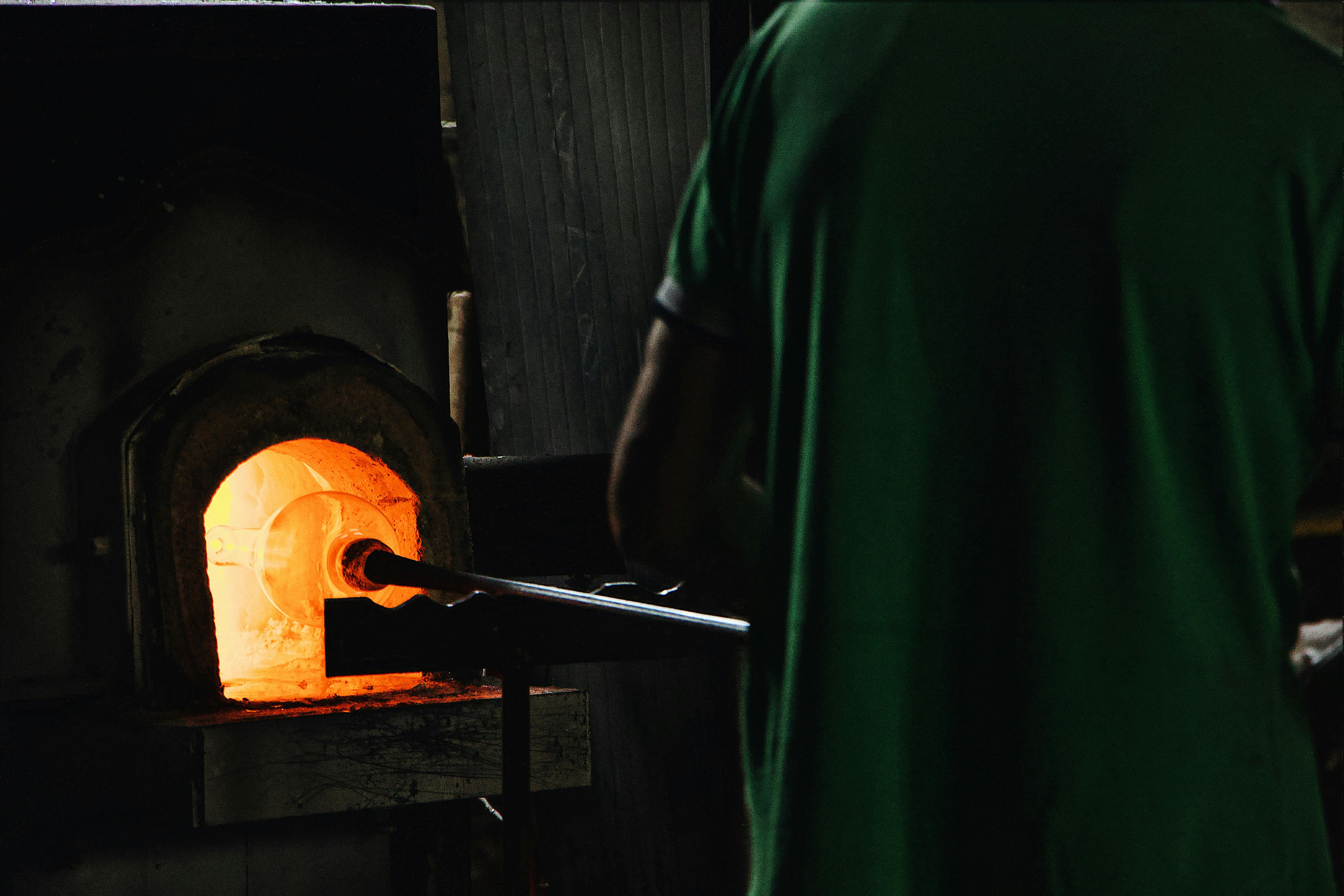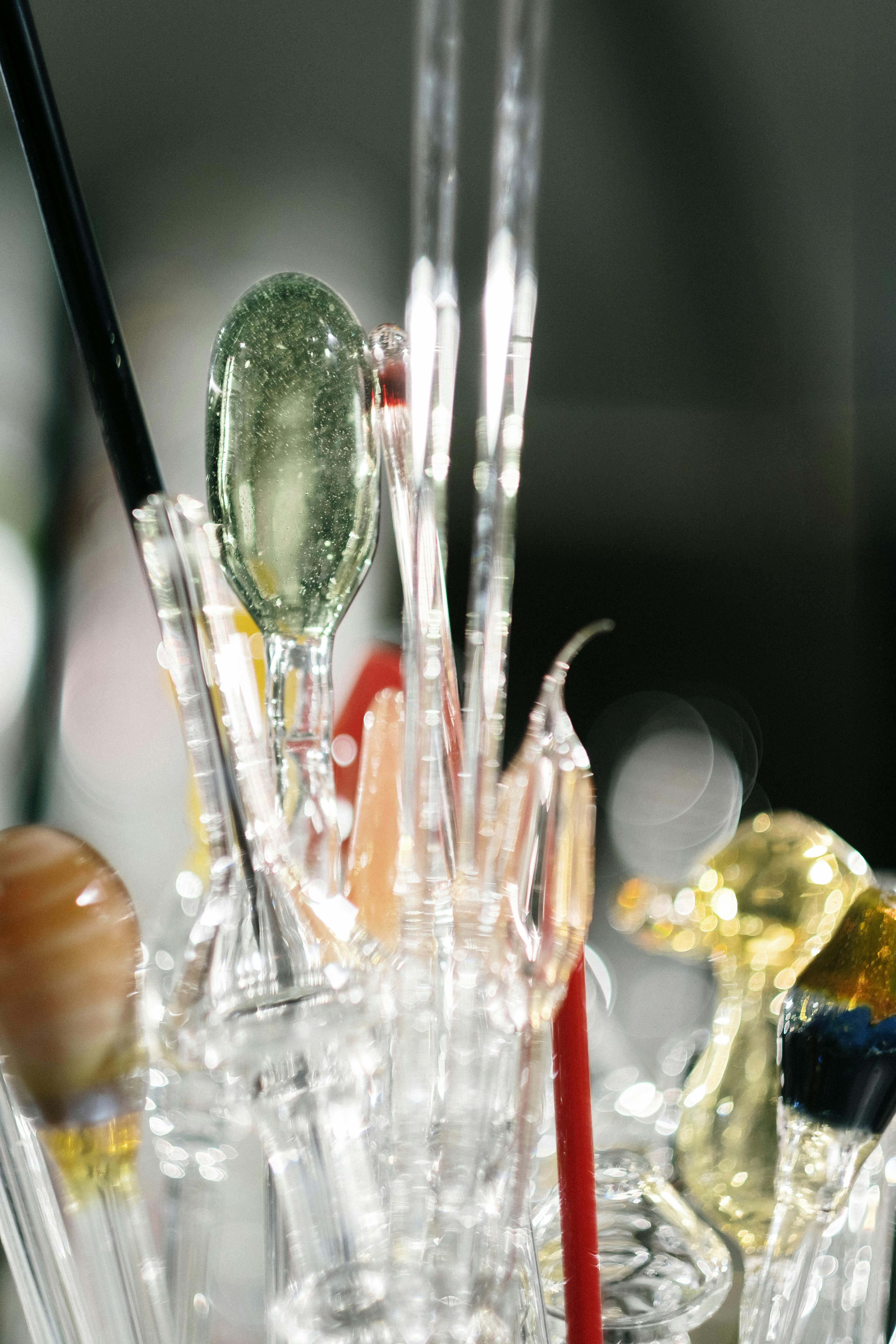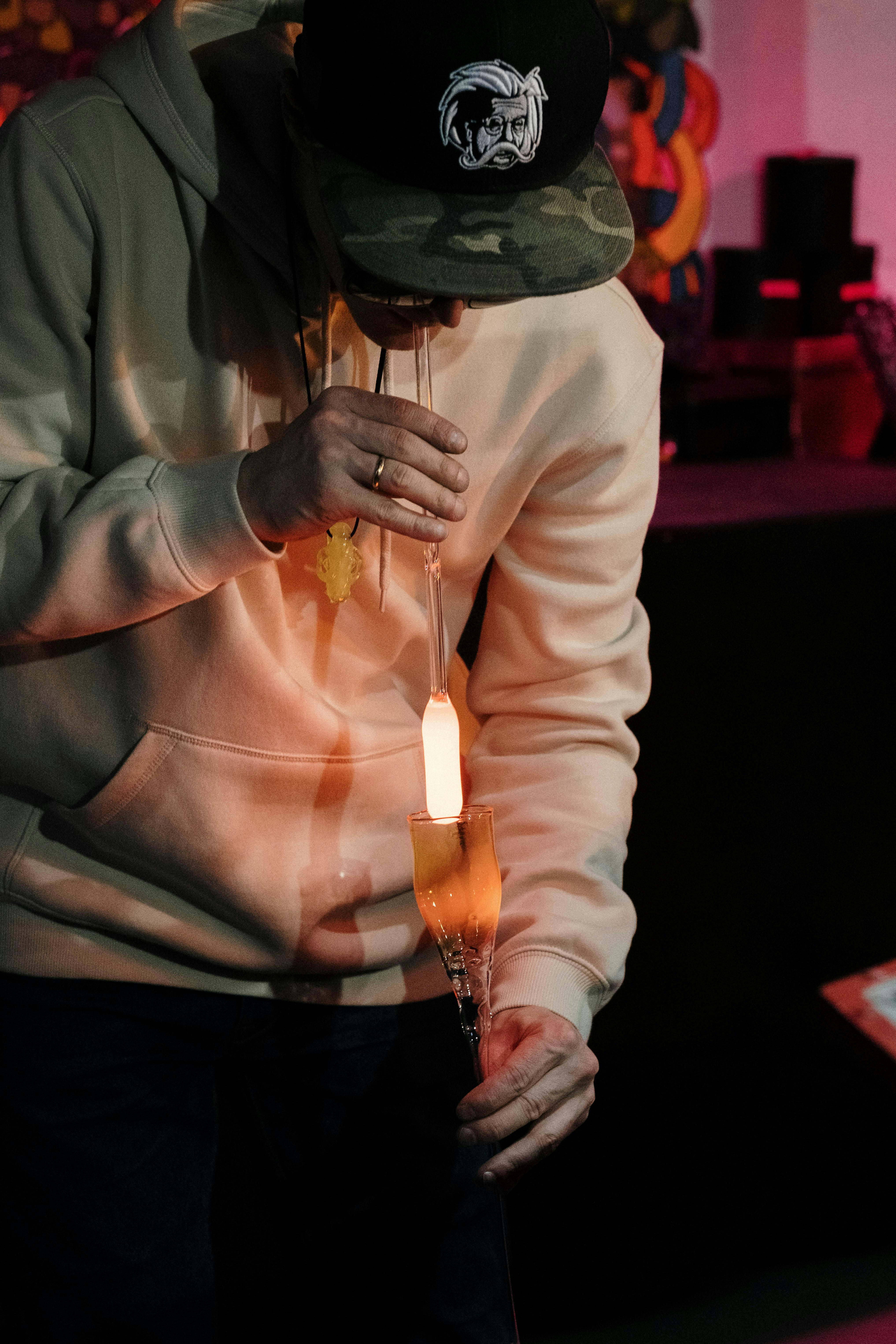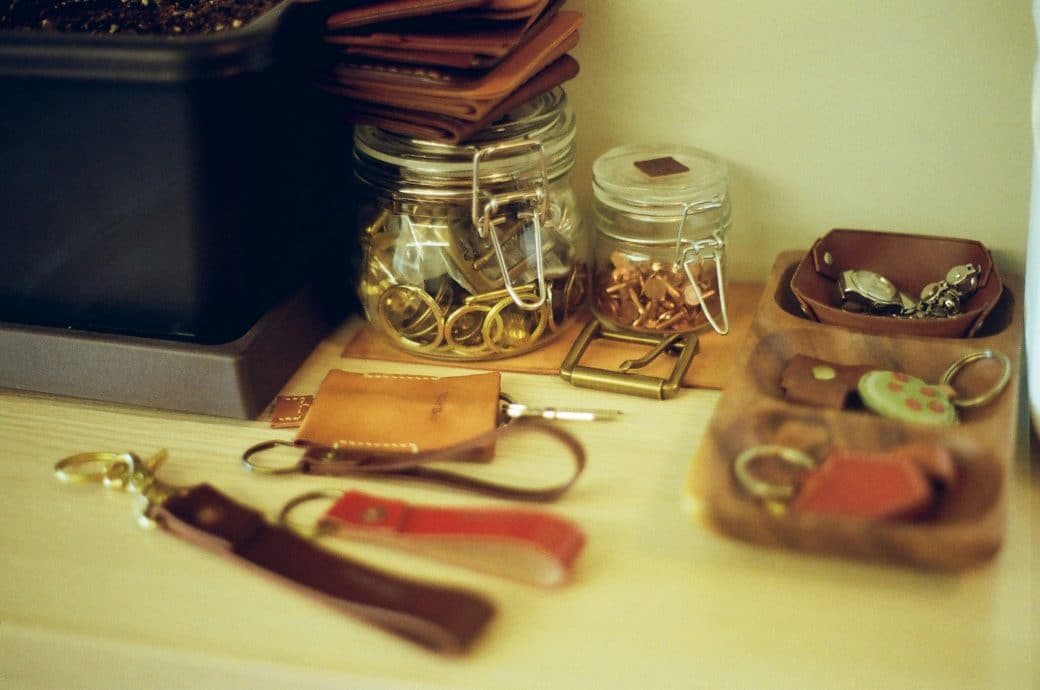I’ve embarked on quite the adventure recently, diving into the world of glass blowing, and let me tell you, it’s both mesmerizing and a tad intimidating. But fear not, because I’ve found the ultimate roadmap to mastering this ancient craft. In “Becoming a Glass Blowing Expert: A Comprehensive How-To Guide,” I’ve documented every step, trick, and pitfall on the journey to becoming a glass artist. From understanding the basic tools and materials to creating exquisite glass art pieces, this guide is your one-stop shop for all things glass blowing. Whether you’re a complete novice or someone looking to refine your skills, join me as I share the wisdom and wonders I’ve discovered on this hot and fiery quest.

Understanding the Fundamentals of Glass Blowing
Glass blowing has always intrigued me. There’s something magical about transforming a molten glob into a beautiful, fragile piece of art. But before diving into the deeper ends, it’s crucial to understand its basics, including its history, terminology, the different types of glass, and essential safety measures.
The history of glass blowing
The art of glass blowing dates back to the 1st century BCE in the Syro-Palestinian region. It revolutionized the production of glass vessels, making them more available to the masses. Before this, glass was a luxury item, limited to the elite. The craft spread rapidly across the Roman Empire, evolving through centuries with the introduction of new techniques and styles. Knowing its rich history adds depth to my appreciation for glass blowing, allowing me to connect with ancient artisans.
Basic concepts and terminology used in glass blowing
Getting familiar with the basic concepts and jargon is like learning a new language. Terms like “gather” (collecting molten glass on the blowpipe), “marver” (a steel or marble table used to shape the hot glass), and “annealer” (a kiln used to slowly cool and harden the finished piece) are foundational. Understanding this terminology makes learning techniques and following tutorials much more manageable.
Different types of glass used in glass blowing
There are primarily three types of glass used in blowing: soda-lime glass, lead glass, and borosilicate glass. Each has different properties and uses. For instance, soda-lime glass is the most common, found in bottles and windows. Lead glass, known for its clarity and workability, is perfect for fine art and decorative pieces. Borosilicate glass has a high resistance to thermal shock, making it ideal for scientific glassware and kitchen items. My choice of glass depends on the project at hand.
Essential safety measures in Glass Blowing
Safety cannot be overstated in glass blowing. The environment is inherently hazardous with high temperatures and sharp tools. Wearing protective gear, ensuring proper ventilation, and understanding how to handle hot glass and equipment safely are paramount. I also keep a first aid kit nearby and am familiar with basic burn care. These precautions help me enjoy glass blowing without compromising my health and safety.
Setting Up Your Glass Blowing Studio
Creating a space for glass blowing has been a dream of mine. It requires careful planning and preparation, from evaluating space requirements to understanding temperature conditions and maintaining the equipment.
Evaluating space requirements
The size of the studio depends on the scale of work I plan to undertake. A small, dedicated corner might suffice for beads and small objects, but larger sculptures require more room. Adequate ventilation is crucial to remove fumes and maintain a safe working environment.
Understanding the right temperature conditions
Heat management is critical in a glass blowing studio. The furnace, glory hole, and annealer must maintain specific temperatures for working and cooling glass. Insulation and room temperature control ensure efficiency and safety.
List of essential equipment and tools
Essential equipment includes a furnace for melting the glass, a marver, blowpipes, and an annealer. Hand tools like jacks, shears, and tweezers are invaluable for shaping molten glass. Investing in quality tools pays off in the long run, both in terms of durability and the quality of the glass pieces.
Basic maintenance requirements for your studio
Regular maintenance prevents downtime and extends the life of the equipment. This includes cleaning the furnace and annealer, checking for wear and tear on tools, and ensuring the ventilation system is in top condition. A well-maintained studio is a pleasure to work in and ensures safety.

Getting Started with Glass Blowing
Diving into glass blowing begins with understanding the source materials and preparing before starting a project. The choice between hand-blowing and using a blowpipe affects the technique and the final product.
Knowing your source materials
Choosing the right type of glass, based on its melting temperature and the intended use of the finished piece, is the first step. I also consider the colors and textures available. High-quality materials lead to better outcomes.
Preparation steps before beginning a project
Preparation involves planning the design, pre-heating the equipment, and ensuring all necessary tools are within reach. Proper preparation streamlines the workflow and helps in executing more complex pieces.
Hand-blowing vs Using a blowpipe
Hand-blowing, though less common, is suited for making small, intricate items like beads. For most other projects, a blowpipe is essential. It allows for more control in shaping and expanding the glass. Each method has its charms and challenges.
Making Simple Objects
Starting with simple objects like beads, marbles, and bowls helped me build confidence and refine my technique. These projects lay the foundation for more complex work.
Creating a basic glass bead
Making a glass bead involves heating a small glass rod and winding the molten glass around a metal mandrel. It’s fascinating to add colors and textures to create unique beads. This project is perfect for beginners.
Making a glass marble
Creating a marble requires gathering a larger amount of molten glass on the end of a rod, shaping it into a sphere, and then cooling it slowly in the annealer. Marbles are a step up from beads, offering a challenge in maintaining a perfect round shape.
Creating a small glass bowl
Making a small bowl introduces the use of a blowpipe. Starting with a bubble, then expanding and opening it up into a bowl shape requires a steady hand and precise heat control. It’s rewarding to create something both beautiful and functional.
Tips for perfecting simple shapes
Patience and practice are key. Starting slow, paying attention to temperature and timing, and not being afraid to retry if something doesn’t turn out as planned are my guiding principles. Every mistake is a learning opportunity.

Advanced Glass Blowing Techniques
As I gained confidence in my skills, I ventured into more complex projects. These required advanced techniques, precise temperature control, and a deeper understanding of glass properties.
Mastering the art of larger shapes
Creating larger objects demands a firm grasp on centripetal force and heat management. It’s about evenly distributing the molten glass and keeping it uniformly hot. This scale of work is both physically and technically challenging.
Sculpting animals and intricate objects
Sculpting requires a detailed understanding of the subject and the ability to visualize and execute complex shapes. Adding features like limbs or facial expressions while the glass is molten tests both creativity and control.
Creating glassware sets
Making sets of glassware not only requires consistency in shape and size but also a keen eye for design. Uniformity is challenging but crucial for a set to feel cohesive. This is where precision really comes into play.
Tips on blowing thin glass
Blowing thin glass requires a gentle touch and precise heat control. It’s about inflating the glass just enough without compromising its stability. The beauty of thin glass lies in its delicacy and lightness.
Addressing Common Problems
Throughout my journey, I’ve encountered my fair share of issues, from cracks and breaks to color inconsistencies and shape distortion. Here’s how I’ve learned to tackle them.
Dealing with cracks and breaks
Cracks and breaks often result from uneven cooling. Using an annealer and ensuring the glass cools slowly and evenly can prevent this. If cracks do appear, sometimes they can be reheated and fused back together.
Addressing color inconsistencies
Color inconsistencies usually stem from uneven mixing or incompatible colorants. Testing small samples before committing to a larger piece helps identify potential issues early on.
Handling issues with shape distortion
Shape distortion often occurs from uneven heating. Keeping the glass at a constant temperature and rotating it steadily are crucial. It’s about finding a rhythm and sticking to it.
Troubleshooting common furnace problems
Regular maintenance helps prevent furnace issues. However, when problems arise, consulting the manufacturer’s guidelines and reaching out to experienced peers for advice has been invaluable.

Undergoing Proper Training and Mentorship
Growth in glass blowing comes with continuous learning, whether through professional classes, mentoring, or community involvement.
Attending professional glass blowing classes
Structured classes provided me with a solid foundation in techniques and safety. They are a gateway to understanding the craft’s intricacies under expert guidance.
Finding a skilled mentor
A mentor offers personalized feedback and invaluable insights from years of experience. My mentor has been instrumental in guiding me through challenges and inspiring my work.
Joining a glass blowing community
Communities, both online and in-person, offer support, inspiration, and a platform to share experiences. They’ve been a resource for troubleshooting, learning about events, and making connections.
Attending glass blowing events and conventions for networking
Events and conventions are fantastic for seeing the latest techniques, meeting industry leaders, and networking. They’ve opened doors to opportunities I never knew existed.
Signing up for advanced workshops and seminars
Advanced workshops have allowed me to delve into specialized techniques and explore new styles. They’re an investment in my growth and creativity.
Exploring Artistic Expression in Glass Blowing
Developing a unique style and exploring artistic expression have been the most fulfilling aspects of glass blowing for me.
Developing your unique style
Finding my voice took time and experimentation. It involved pushing boundaries, combining techniques, and being true to my vision. My style continues to evolve with each piece I create.
Creating signature pieces
Signature pieces showcase my skills and artistic direction. They are a culmination of my experiences, influences, and experimentation in glass blowing.
Combining glass with other materials like metal and wood
Integrating other materials like metal and wood has opened up new dimensions in my work. It challenges me to think differently about design and functionality.
Incorporating color and texture in your designs
Playing with color and texture adds depth and interest to my pieces. It’s a way to evoke emotions and tell stories through glass.
Turning Your Skill into a Business
Transitioning from hobbyist to professional meant learning to market my work, price it correctly, set up an online presence, and participate in art shows.
Marketing your work
Effective marketing involves understanding my audience, showcasing my work attractively, and leveraging social media. Telling the story behind my pieces helps connect with potential buyers.
Pricing your products
Pricing reflects the materials, time, and skill involved. It’s been a balancing act between valuing my work appropriately and meeting market expectations.
Setting up an online shop
An online shop has broadened my reach, making my work accessible to a wider audience. It’s about clear, enticing product descriptions and high-quality images.
Participating in art shows and exhibits
Art shows and exhibits provide a platform for exposure and direct feedback from the public. They’ve been invaluable for gaining visibility and growing my customer base.
Staying Inspired and Enhancing Your Skills
Staying inspired and continuously enhancing my skills are vital for my growth as a glass blower.
Keeping updated with the latest trends in glass blowing
I stay updated with trends by subscribing to industry magazines, following influencers, and attending workshops. It helps keep my work fresh and relevant.
Exploring different cultures and their influence on glass art
Traveling and exploring how different cultures approach glass art has expanded my perspective. It’s been a source of inspiration for incorporating diverse styles and techniques.
Pushing the boundaries of conventional glass blowing
I challenge myself to think outside the box, combining traditional methods with innovative ideas. It’s about constantly experimenting and pushing the limits of what’s possible with glass.
Continuously challenging yourself for higher-level creations
Setting higher goals for each project drives my progression. Whether it’s mastering a new technique or tackling a complex design, I’m always striving to elevate my craft.
Becoming a glass blowing expert is a journey of constant learning, creativity, and passion. It’s about embracing the challenges and letting them propel you to new heights. As I continue to explore this mesmerizing art form, I look forward to the endless possibilities that lie ahead.



